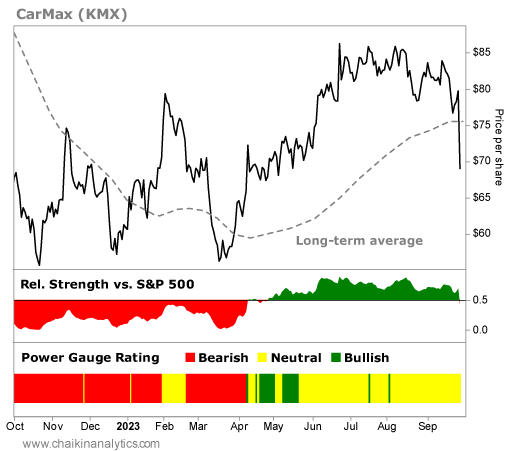My heart sank when the real estate executive suggested taking my car…
You see, we were meeting to discuss a multimillion-dollar deal. I hoped to share it with my subscribers. And he suggested something that hadn’t crossed my mind yet…
“Let’s hop in your car and drive around the property.”
A sense of self-awareness rushed over me.
Don’t get me wrong. My car is clean. I don’t drive a jalopy or anything like that.
But it’s in the “affordable” category. And it was small for the figurative (and literal) “big guy.”
“I’m sorry. I prefer to drive cheap cars,” I said with a chuckle.
Then, in an instant, everything got better. The real estate executive replied…
I was the same way. I never could understand buying a new car off the lot. In fact, I feel like the used car I drove was part of building my wealth. I never had to worry about being bogged down by a payment.
Folks, driving an executive around in a cheap car is a surreal experience. That’s especially true when you’re discussing the ins and outs of a deal that will take many millions to close.
But nearly everyone can relate to this situation…
Buying a car is one of the main financial drags on most Americans. It’s the next biggest bill after housing. And in recent years, this burden got a lot more expensive…
Specifically, supply-chain issues hit this industry hard after the COVID-19 pandemic. Many used-car dealers struggled to keep enough inventory. With less supply, prices soared.
But that’s not the case anymore…
The average price of a new car is around $48,000 today. That’s up from roughly $30,000 in 2012.
And we can assume that new-car prices will steadily march higher. It’s just basic economics.
But in the used-car market, a lot of other factors are in play.
In recent years, used-car prices got absurdly close to new-car prices. As recently as the end of last year, some estimates put the average used-car price at around $33,500.
They got so high that even Consumer Reports told folks to “consider buying a new car.”
That’s no longer the case…
We’re finally seeing a bit of wiggle room in the used-car market. In fact, the Consumer Price Index for used cars and trucks is down about 10% from its January 2022 high.
With the Power Gauge’s help, we can look at this situation from another angle…
In short, used-car retailer CarMax (KMX) is struggling to make money. The company just missed earnings expectations last week.
After the poor report, CarMax’s stock fell 13% in one day last Thursday. And as you can see in the following chart, it dropped below its long-term average. Take a look…
You’ll also notice that the Power Gauge has mostly held CarMax in “neutral” territory in recent months. That’s especially telling when you consider it was beating the market…
The stock surged roughly 53% from mid-March through early August. Meanwhile, the S&P 500 Index only gained around 15% over the same period.
But the Power Gauge wasn’t buying the uptrend. And after CarMax’s bad report last week, we now see why.
CarMax is in an incredibly tough spot today…
It’s full of inventory that it bought at peak prices. And now, those prices are cooling off.
Worse still, interest rates are still high. That’s keeping monthly payments expensive for any car buyers who do take out loans.
In the end, CarMax doesn’t have much of a choice. It’s being forced to drastically discount cars to close sales and clear inventory.
The company will wind up doing the exact opposite of what you want to do in business. It bought high. And at some point, it’s going to sell low.
That’s a terrible deal for CarMax. But it’s a welcome respite for everyday Americans.
Affordable used cars lower the financial burden of life…
I know it. Real estate executives know it. And working-class Americans know it.
Good investing,
Vic Lederman
